EDI 850

Trade relationships are built on purchase orders (POs). Whether it’s a wholesale or a dropship relationship, retailers need to buy products from their suppliers to sell them to customers.
POs have come a long way from their paper-based format. Now, API-based integrations between retailers and brands (facilitated by platforms like ours) mean that orders can flow seamlessly between systems without having to manually generate POs.
But what if your trading partner remains reliant on electronic data interchange (EDI) to transact with you? That’s when you’ll receive EDI 850 files from them and you need to understand what they are to transact with them effectively.
In this article, we’ll explain what EDI 850 documents are and why they’re used. We’ll also share an example of an EDI 850 document and walk you through it so that you know what to look for when you’re sending and receiving 850 documents with your partners.
What is an EDI 850 document?
The EDI 850 Purchase Order document is used to place and receive orders between trading partners. It contains important information about where to ship the order, the requested products and their quantities, as well as the purchase order number. This order number functions as a unique identifier for the purchasing party across the life of an order, which is important in a dropship context where multiple order updates usually take place.
When an 850 Purchase Order is placed, it is standard practice for the receiver to respond back with an EDI 855 Purchase Order Acknowledgement document.
850 documents are formatted in the ANSI x12 EDI standard in North America and in the EDIFACT standard in Europe and Asia.
Intended benefits of using EDI 850
Retailers continue to use EDI more out of convenience than because it is the best standardized electronic format to do trade with their suppliers. A few of the intended benefits of using EDI 850 are:
- Speed and accuracy: Instead of sending paper POs back and forth, EDI 850 files are intended to reduce processing times for producing POs and sending them from one trading partner to another. Since they’re electronically generated, they’re less prone to human errors that delay the purchase process in the supply chain.
- Standardized format: EDI allows different parties to communicate with each other in a shared language. Retailers can process 850s for multiple suppliers and not have to worry about formatting them a different way each time, which also saves them time and effort.
Drawbacks of using EDI 850
EDI vendors love to talk about the benefits of using different EDI documents and EDI transactions, but it’s important to share the drawbacks of using EDI for your purchase orders too.
- EDI is time consuming to set up
If your trading partner doesn’t have EDI, good luck trying to send them EDI 850 files quickly. Industry research shows that the average onboarding time for suppliers takes three to four months. Usually, this delayed onboarding time is a result of setting up EDI solutions for brands. - EDI is expensive to implement
Modern suppliers don’t have access to large-scale IT teams that they can leverage for their EDI implementation. And because EDI is a legacy technology that isn’t part of the modern tech stack, only a handful of engineers can handle EDI implementations, making it prohibitively expensive to implement. - EDI networks commoditize trade relationships
Once you’ve gone through the hoops of setting up an EDI integration with your supplier, you’ve usually forfeited your exclusive trade relationship with that brand. The reason for this is EDI providers open their trade networks to all parties operating in the network as an incentive to join the network.
If you have an existing trade relationship that runs on EDI, that’s totally fine. However, if you’re trying to set up new trade relationships to keep your catalog fresh and differentiated, EDI is inefficient and can affect your ability to onboard your suppliers at scale.
We can help with this. We’re a trading platform that helps you connect with suppliers, regardless of how they would like to integrate with you. Whether they have a Shopify, WooCommerce, or BigCommerce store, or they prefer to transact with CSV or EDI files, we can help you connect with them and start trading in days.
